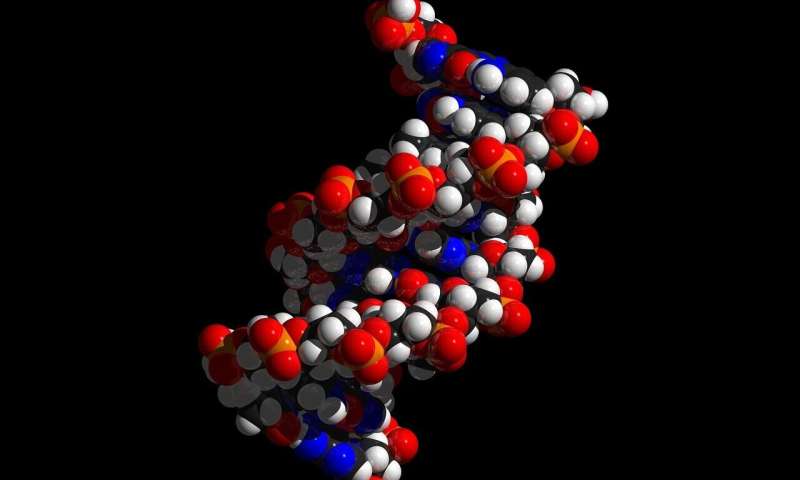Oligomers observed mimicking the combination of DNA strands

An international research team have for the first time observed dynamic covalent oligomers mimicking the combination of complementary DNA strands, which could lead to exciting developments in electronics and the engineering of interfaces between prostheses and body tissue.
The study by Associate Professor Timothy Scott (Department of Chemical Engineering and Department of Materials Science and Engineering at Monash University) and Samuel Leguizamon (Department of Chemical Engineering at the University of Michigan), reported that during the assembly process, oligomers were able to selectively bind with their complementary sequences by using covalent bond formation.
This effectively strengthened the thermal and mechanical stability of the resultant structures through the creation of a DNA-like molecular ladder.
Published on Friday 7 February 2020, in the prestigious journal Nature Communications, these findings could have benefits for the superior creation of nanostructures (solar capture technology), the assembly of molecular electronics (wires and transistors), and the engineering of interfaces between prostheses and human tissue.
Oligomers are low weight polymers—a chemical compound of molecules presented in chains—whose physical properties are significantly dependent on the length of the chain.
They are currently used to improve performance in a wide variety of coatings, such as adhesives, chemical resistance and for improved weathering.
Oligomers, due to their ability to reduce volatile organic compounds (harmful vapours emitted by products) and application viscosity (the thickness of which a product is applied), are commonly found in products, such as paint and varnish.
But, researchers believe this new finding could open the door for these oligomers to be applied in the health and technology sectors.
"The ability to direct the self-assembly of oligomeric strands based on their residue sequence and mediated by dynamic covalent interactions is a crucial step towards the fabrication of complex, unimolecular constructs from modest, synthetically accessible precursors," Associate Professor Scott said.
"Although this study involved molecular ladders bearing covalent rungs, this multi-step approach to dynamic covalent assembly process may also be useful for other application in which the alleviation or elimination of kinetic trapping is critical.
"This process will provide significantly improved synthetic access to robust, complex covalent nanostructures, such as molecular cages and crystalline, porous polymer networks."
More information: Samuel C. Leguizamon et al, Sequence-selective dynamic covalent assembly of information-bearing oligomers, Nature Communications (2020). DOI: 10.1038/s41467-020-14607-3
Journal information: Nature Communications
Provided by Monash University





















